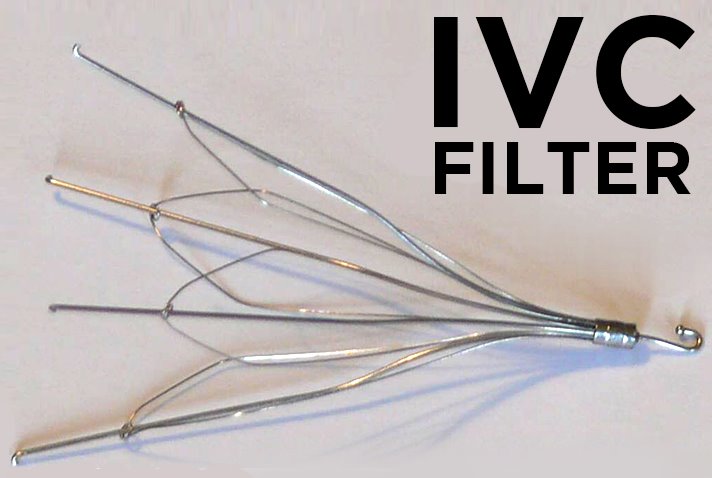Complications and Issues with IVC Filters
The complications in patients with IVC filters can be immediate or be delayed for several years. In some cases, the complications are life-threatening and sometimes result in death. That's why patients with indwelling filters are often advised to check the status of their devices regularly. A physician can carry out a routine assessment through x-rays or CT scans. On that note, below are some of the common complications associated with IVC filters;
IVC filter migration
Research shows that a filter can migrate to other parts of the body when left in place for more than 30 days after implantation. If it finds its way into the cardiopulmonary system, a retrieval procedure should be performed immediately, and this might include an open-heart surgery.
Filter fragmentation and perforation
Filter fractures mainly depend on the type. However, it has been noted that if a filter is left in place for more than a year, fractures are likely to occur. According to the researchers, filters tend to fatigue and fracture due to the daily stresses that occur within the body. A fractured filter can perforate the vein causing internal bleeding or pieces of it migrate to the heart and get lodged in it.
Failure to open
There are instances when a defective filter fails to open completely. Sometimes it can also be due to errors on the part of the doctor who performed the procedure. Failure to open means the filter’s performance is reduced, and it may not effectively trap the blood clots. This, in turn, may result in cardiac or pulmonary embolism.
Leg pain due to blockage
Leg pain is usually an indication of device blockage. In some patients, the blood clots are successfully captured in the filters, but the body is unable to break them down. As a result, more clots accumulate down the IVC causing immense pain and swelling in the legs.
Embolization
Embolization is when a filter fragment breaks loose, travels through the bloodstream, and enters the lungs or heart. Signs and symptoms of embolization include acute chest pain, shortness of breath, abnormal heart rhythm, and sometimes loss of consciousness. This condition often has severe consequences and sometimes causes the death of the patient.
How IVC filters are removed
For the majority of the patients, the retrievable filters are removed without any serious incidences. A healthcare provider inserts a catheter through a small incision on the skin. Afterward, they inject contrast through the catheter to assess the vessel and ensure there are no gigantic blood clots within.
The catheter is then placed over the filter and used to collapse it in a similar manner as a folding umbrella. The filter is removed together with the catheter. With that said, there some instances in which the filter cannot be retrieved using the standard methods. This is especially logical for the patients with filters that have scarred into the blood vessel. In such cases, advanced retrieval is considered. This often involves the use of excimer lasers to safely remove the scar tissue, which has formed around the filter.
With advanced technology and extensive research, IVC filter retrievals are very possible. Many patients are unaware of this and live knowing their embedded filters cannot be safely removed without the need for invasive open surgery. The patients need to take the time to research on their own and be aware of the advanced filter removal procedures. If a retrievable filter cannot be safely removed and causes severe complications, patients can sue the manufacturer.

Contact us for a free case evaluation
Contact an attorney right away to discuss your case.
You deserve compensation for your injuries.